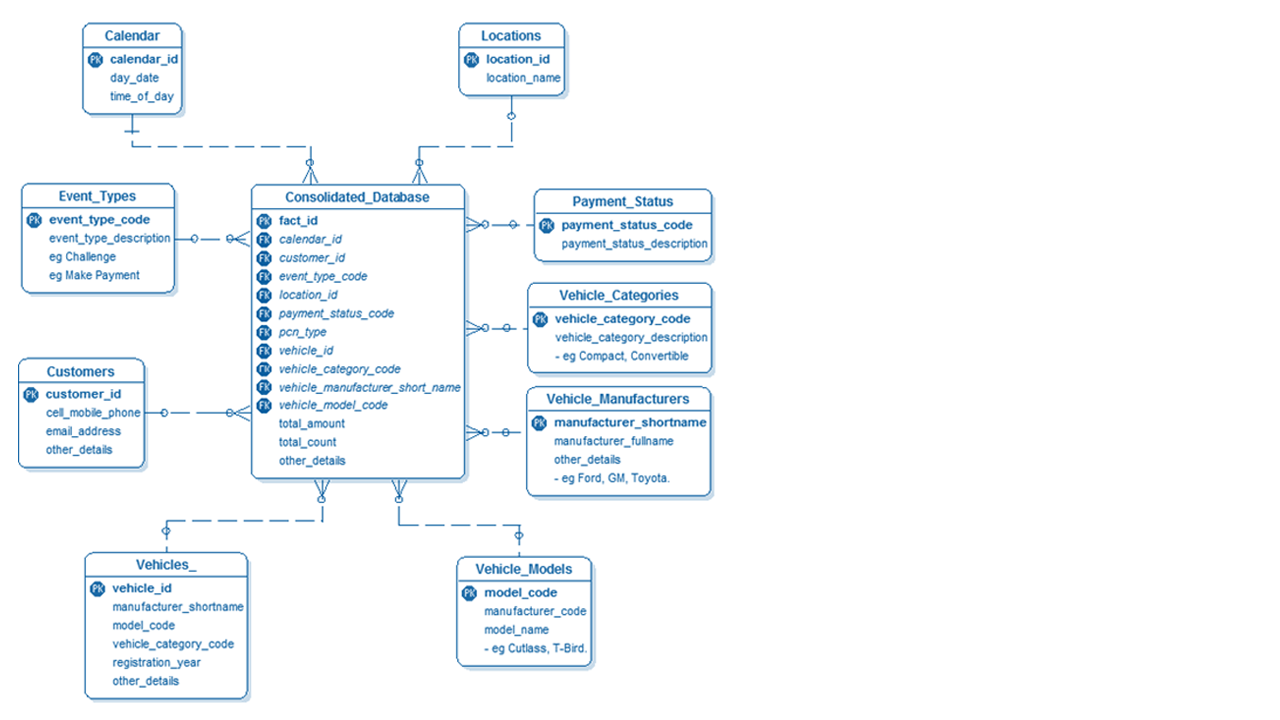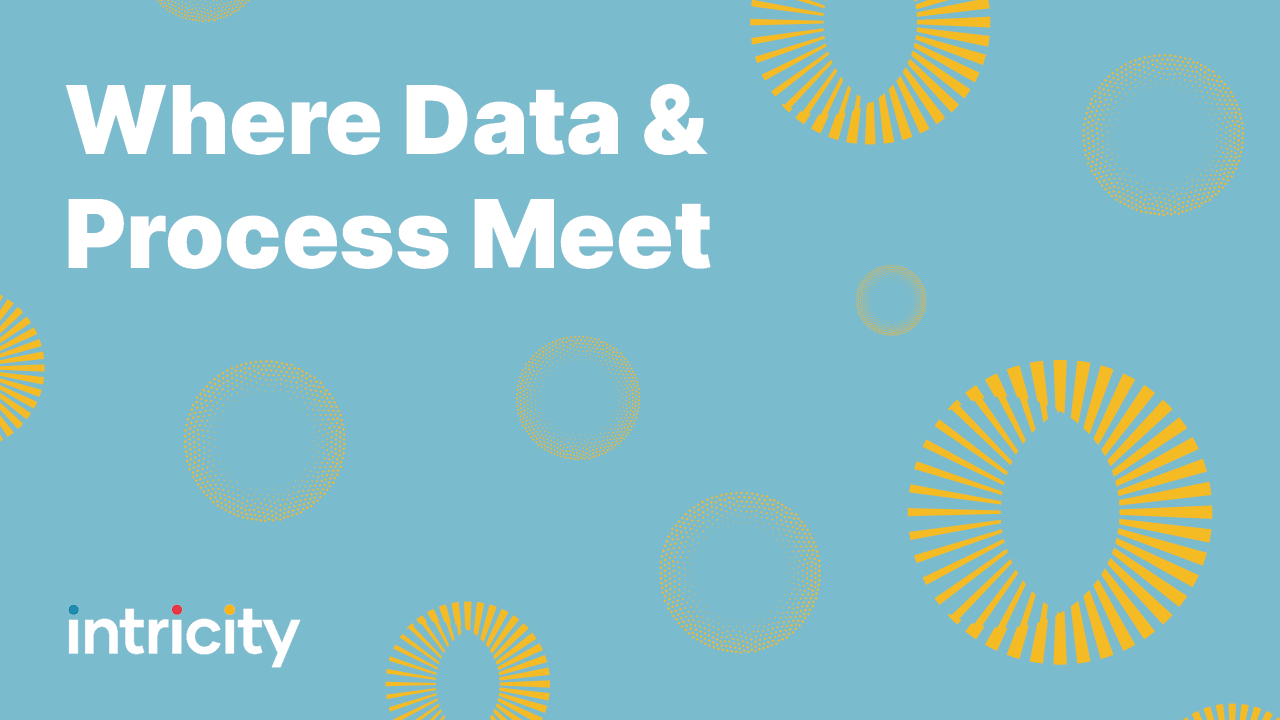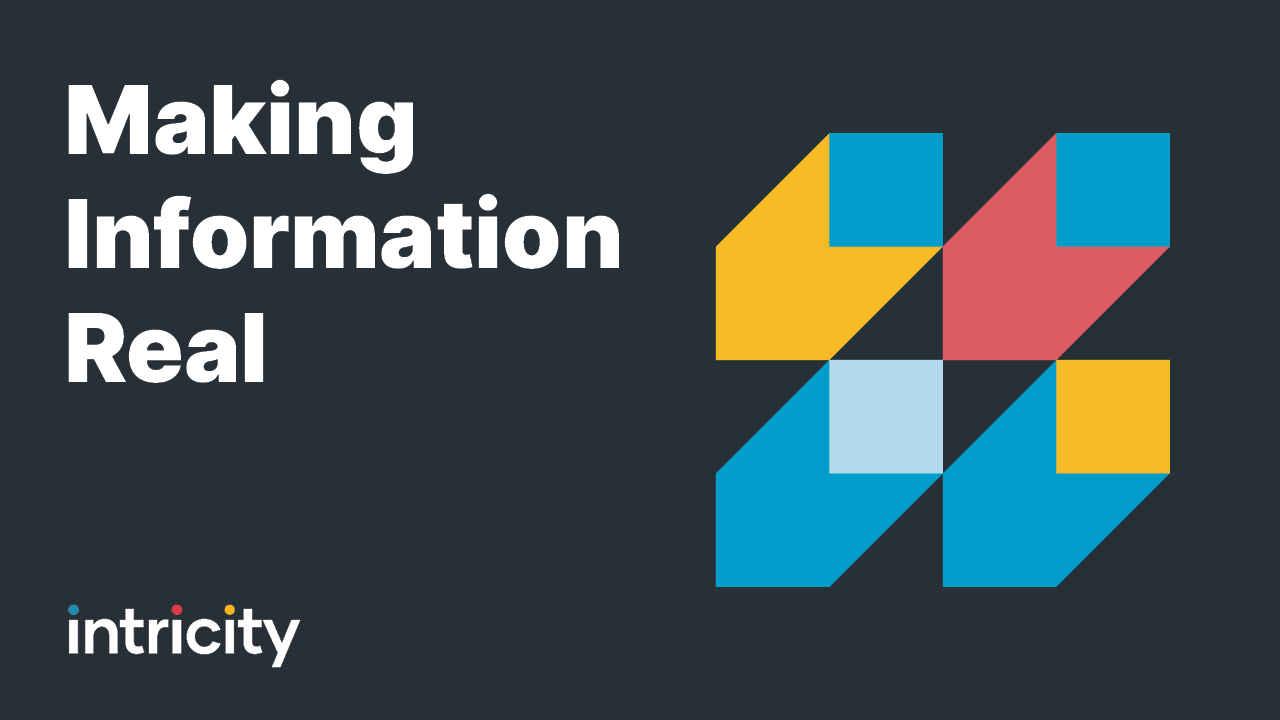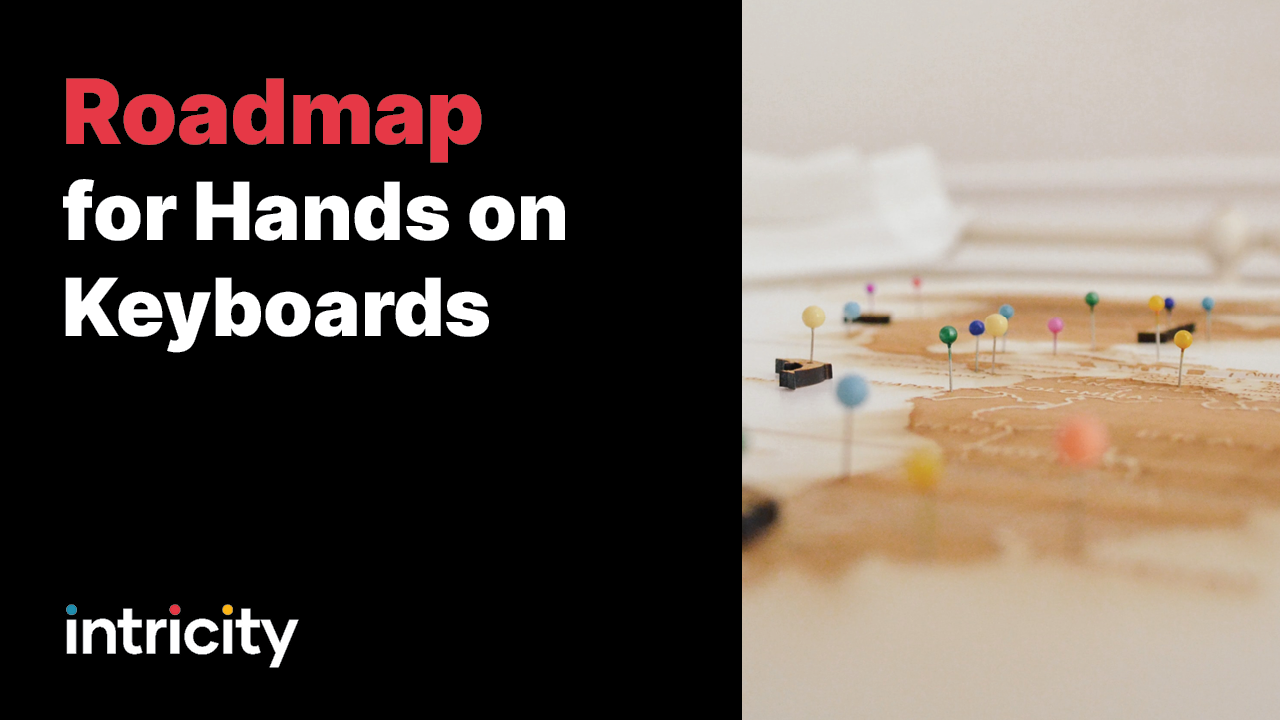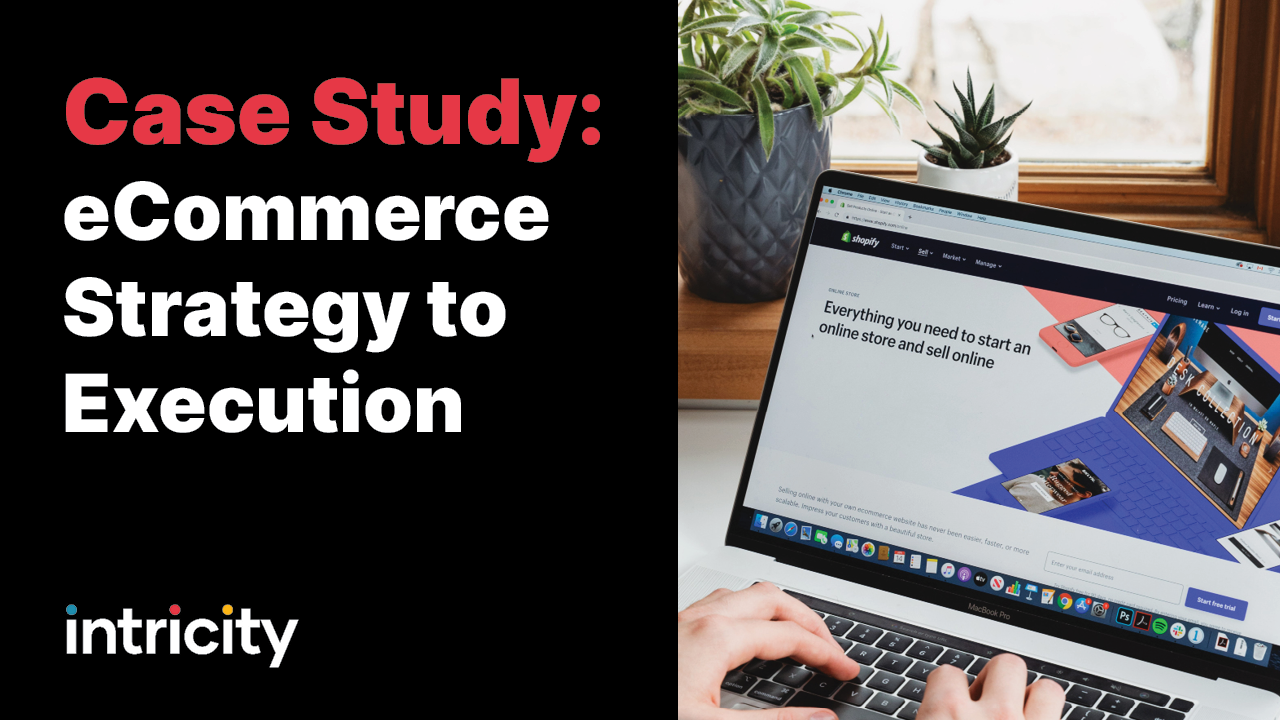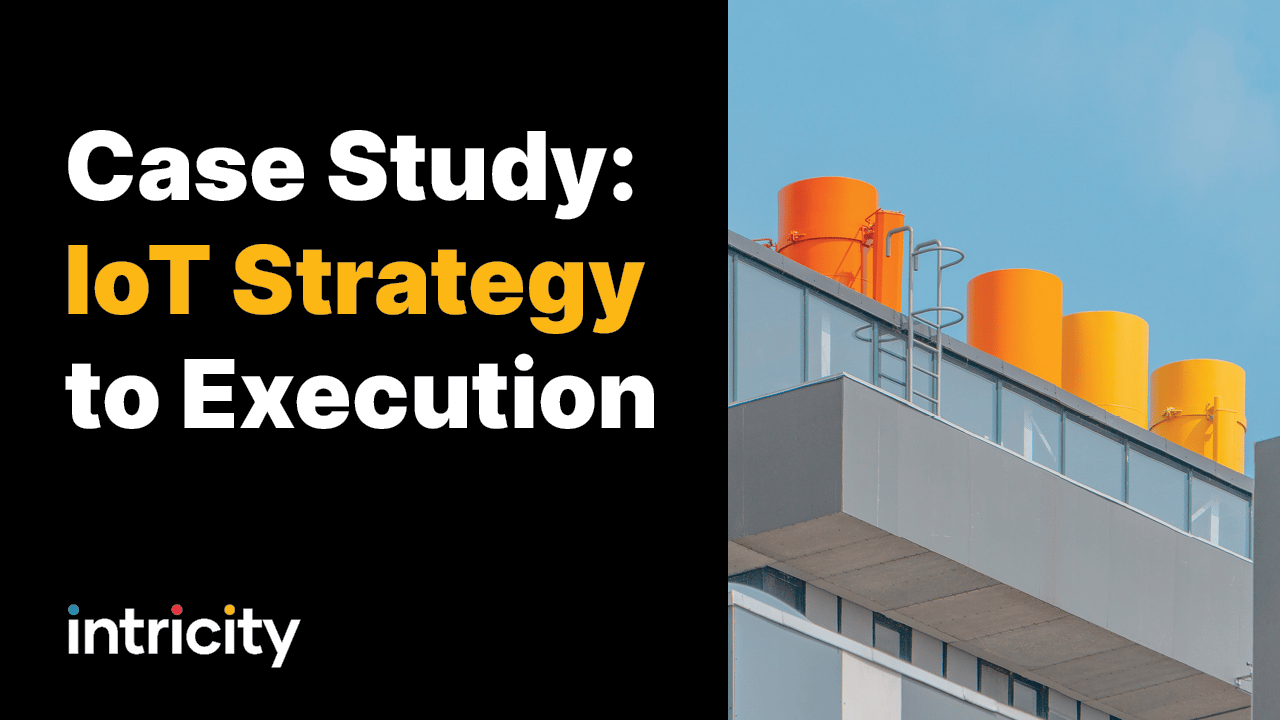STRATEGY
Intricity’s team has lived in the Data Management space for over 30 years. This wealth of knowledge allows us to see how different deployments play out over the long run. Often what looks really appealing in the short term becomes a complete waste of the organization's efforts, as the platform decisions cannot scale to your requirements, governance, and growth.
To help our customers, Intricity offers a series of strategic engagements to rapidly facilitate a roadmap that will keep the organization from painting itself into a corner. The strategic deliverables are self-contained engagements that are often coupled up to meet the needs of our customers.
SOLUTION ARCHITECTURE
Intricity’s solution architecture engagements are designed to provide guidance on the technologies and project phases that will deliver on the vision of a shared and trusted data-to-information factory.
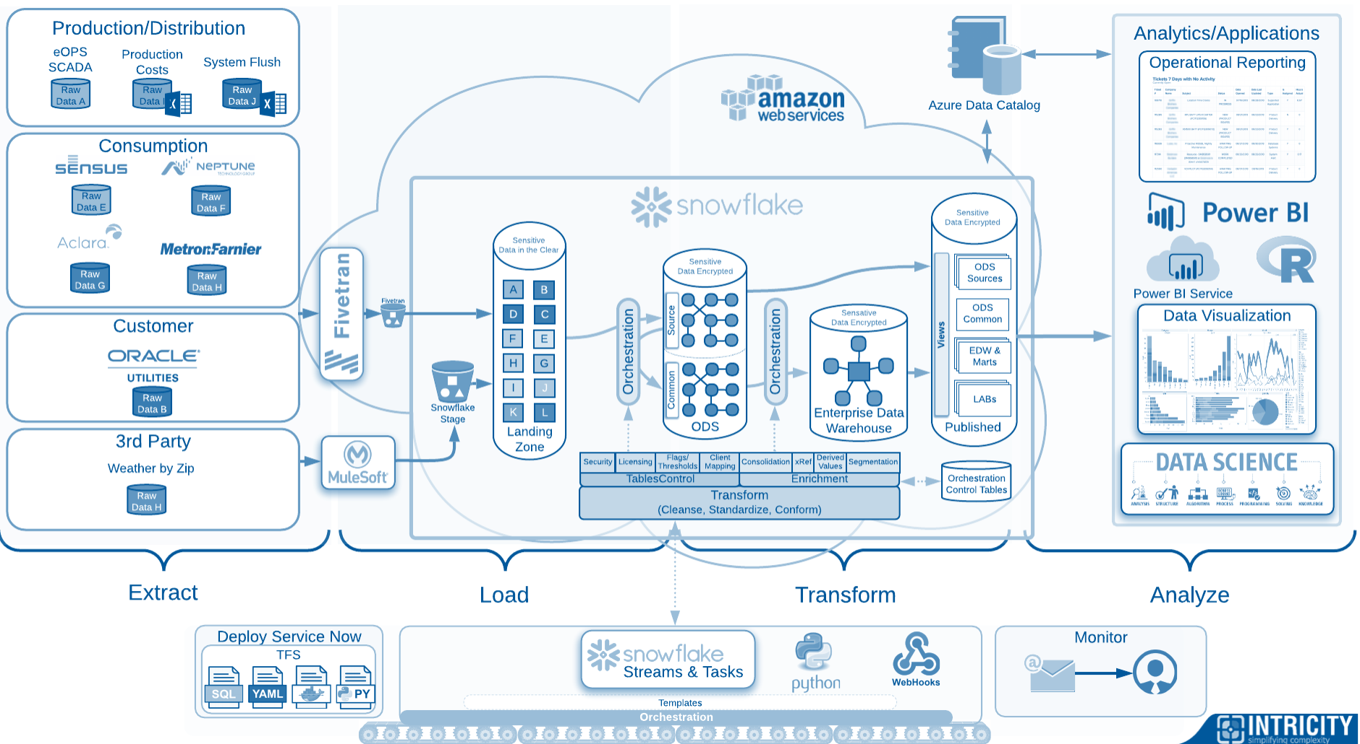
LOGICAL SOLUTION ARCHITECTURE (LSA)
The LSA is a future state blueprint that outlines the technical architecture needed to solve the challenges expressed by the business and technical stakeholders. The focus of the LSA is to provide a vision into the future data-to-information factory. This helps the organization understand the required investments in both technology and development to achieve its goals.
The design of the LSA is done by facilitating discussions with both business and technical stakeholders to evaluate the enumerated goals. The input from the business acts as the foundation for justifying the investment and is a critical foundation of the effort. Additionally, the technical stakeholder interviews act as a perspective on what technology assets are available and what skill sets the organization has already invested in.
These interviews act as the foundation for designing future-state architecture. The design of this architecture is done in multiple drafts which are presented to the technical stakeholders through iterations. The final version of the designed architecture is presented to the executive stakeholders from both the business and technical sides of the organization.
Whitepaper: What Questions Do You Ask?
STRATEGIC ROADMAP
A Strategic Roadmap is often coupled up with an LSA engagement as it allows the future state requirements to get budgetary numbers and defined phases.
The Strategic Roadmap is often referred to as a “credenza slide” as it plans out the overall goals, the goals of each phase, what technologies will be deployed in that phase, what resource types are required for that phase, what the phase is estimated to cost and how it relates to the goals of the organization.
This asset allows for long-term budgeting and planning to take place. Coupling this asset up with the LSA allows for the components understood in the blueprint to be connected with the phases.
Whitepaper: Roadmap for Hands on Keyboards
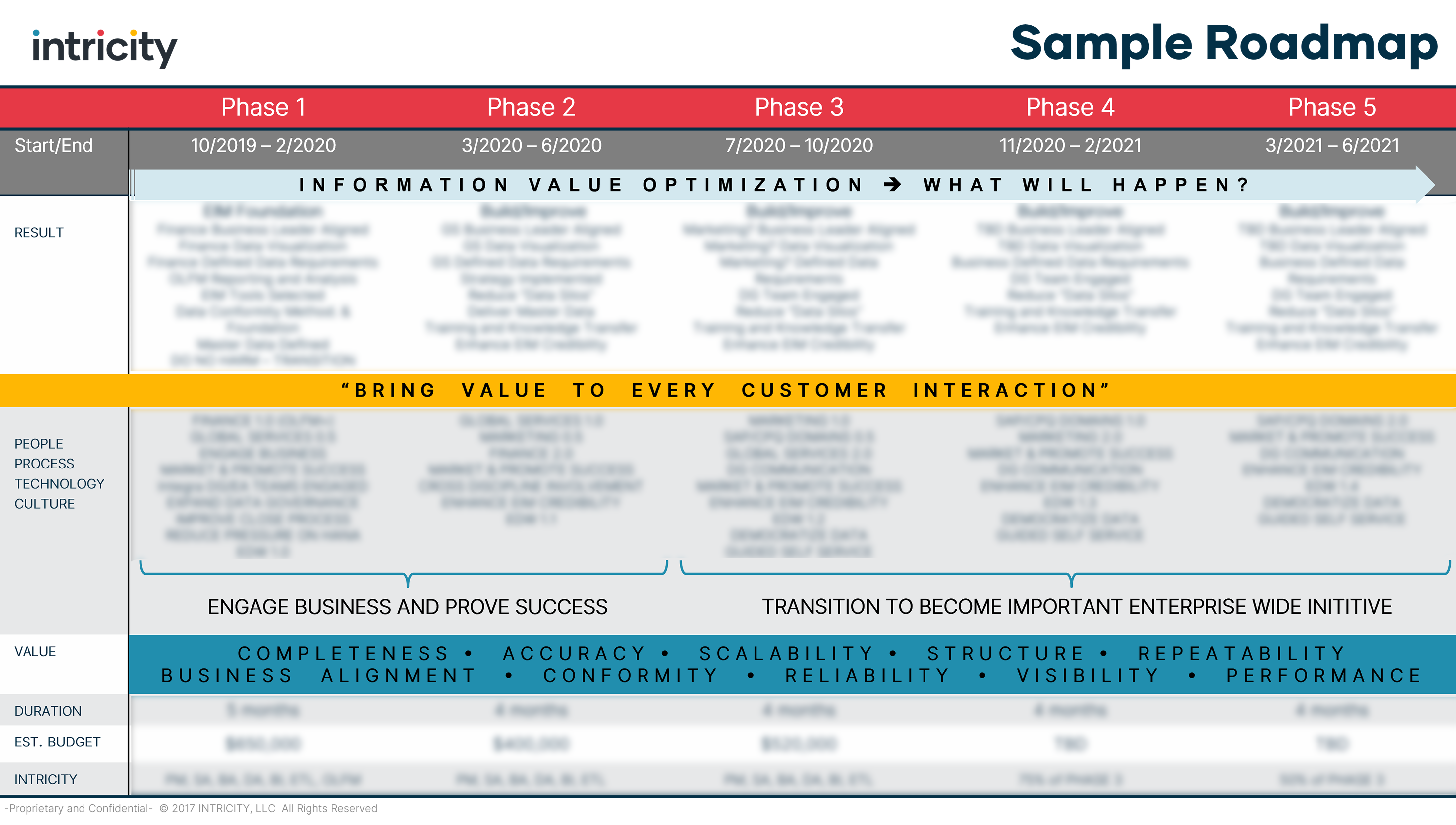
DATA ARCHITECTURE
The logic for turning data into information must live somewhere, whether it’s in people’s heads or in an automated process. The goal of the Data Architecture portion of Intricity’s Strategic Assessment is to inject reusability into the data landscape so not every aspect of the data-to-information process is a bespoke event. This is done by conforming both the logic and the structure for data into reusable assets which team members can use like lego bricks to assemble their analytics, conduct data science, and intelligently operate the organization.
There are two ways of designing a data architecture: “Bottom-Up” or “Top-Down”.
Bottom-Up:
The Bottom-Up approach designs the aggregation and conformity based on the available data and not business user requirements. The theory is that the data should ultimately express the end requirements. This is also a tempting approach for IT departments as it allows them to avoid interaction with business stakeholders.
However, Bottom-Up rarely, if ever, works. What usually happens is that the lines separating IT from business users become a chasm, with business users defaulting their data requests to “give me all the data”, and aggregated data sets that rarely get used.
Top-Down:
The Top-Down approach puts the business stakeholders at the helm of the requirements. What this means though is that they will need to be interviewed so their requirements can be validated. The way these interviews occur really matters, as they need to speak to their business the same way they would speak to a peer in their domain of expertise. This is one of the keys to getting them to speak to their requirements for information.
Thus when Intricity often gets asked, “what questions will you be asking from our stakeholders?” Our answer will never sufficiently capture the true breadth of our line of questioning. This is because the first line of questions leads to branching questions that can go deep into topics that are important to the business stakeholders.
The only questions Intricity can predictably provide are the top-level questions. The resulting assets that get produced are critical for establishing awareness of data consumption needs between business stakeholders.
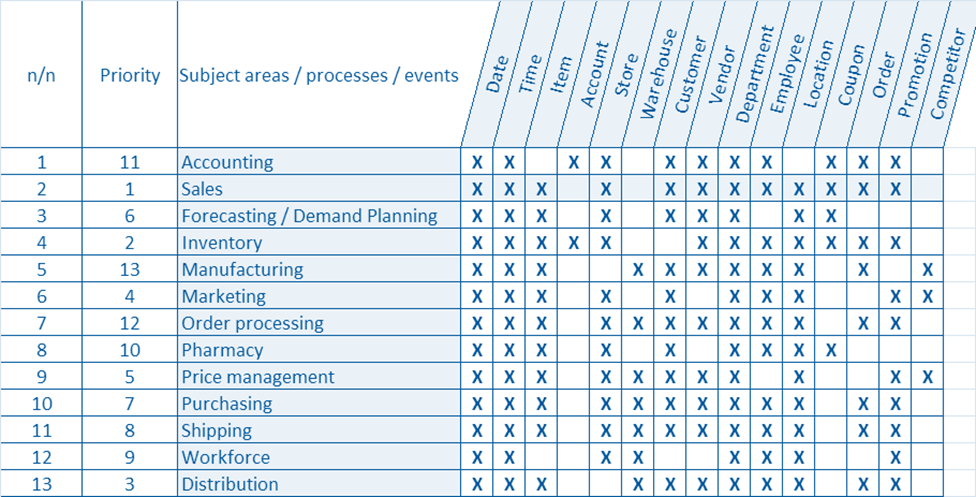
BUS MATRIX
When business users indicate the need for certain data points during interviews, the Intricity team rapidly captures those requirements in mind maps as a form of meeting minutes. Those meeting minutes then get translated into an asset called the Bus Matrix.
This is a matrix that lists all the processes, subject areas, or events on the Y-axis and lists all the desired data attributes on the X-axis. Then in the body of the matrix, when the business user expresses a need for a certain data attribute, an “X” is placed in that intersection.
To learn more about the Bus Matrix and its impact on a data strategy, here is a whitepaper: Where Data and Process Meet
CONCEPTUAL DATA MODEL
A conceptual data model represents the business requirements in the form of a potential database schema. At some point, these design exercises will need to be expressed into something physical.
The Conceptual Modeling exercises are the initial attempts to make that happen. This is typically conducted in a data modeling tool that can enable rapid prototyping and when ready can express the designed model into actual database code. The Data Model starts as conceptual to lay the foundation for further iteration once the actual project gets the green light.
Whitepaper: Making Information Real
